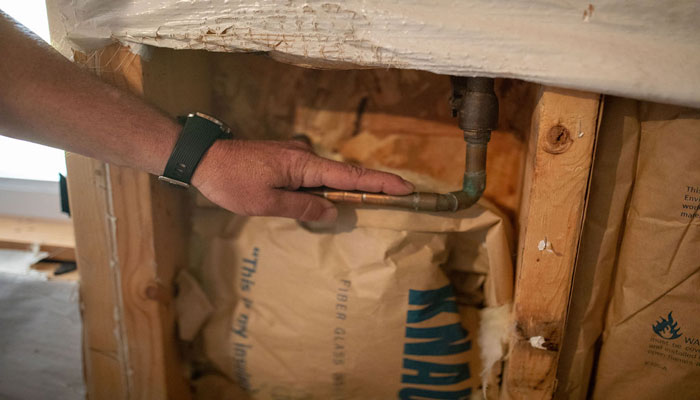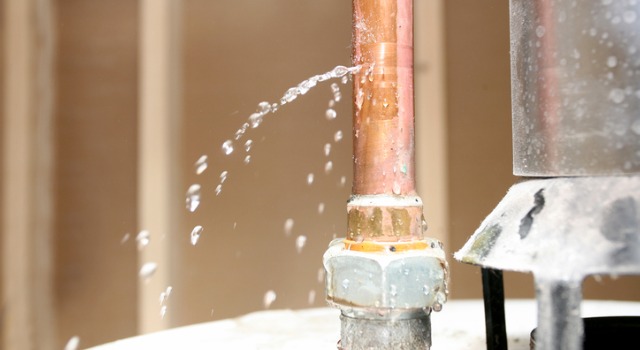Restoration Tips For Flood Damage From a Burst Pipeline - Recover Quickly
Restoration Tips For Flood Damage From a Burst Pipeline - Recover Quickly
Blog Article
Nearly everybody seems to have their private assumption on the subject of Rules For Handling Water Damage.

What should you do if a water pipe bursts in your home? The longer you wait, the much more severe the damage that can happen to your residential property. For these factors, you need to learn exactly how to act in the event of a ruptured water pipeline.
Turn off the Main Waterline Shutoff
The first thing to do? Close the shut-off shutoff. Try to find the neighborhood shut-off valve to shut off the water in one particular location just. If you do not understand where the localized shut-off shutoff is, opt for the main water line shutoff and transform it off. This action will remove the water quickly in your whole residence. Usually, the primary shutoff is found outside the home beside the water meter. If it's not there, you can additionally locate it in two locations: in the cellar at eye degree or the first floor on the ground. Usually, home builders put the shut-off shutoff in the main ground degree restroom or best alongside it.
Call Water Damage Restoration Pros for Aid
After closing the water resource, call the professionals for assistance. Due to the fact that the pipelines required to be dealt with as well as there is a demand to deal with the various other problems to your home, this scenario is not something you can do some DIY. Look for assistance from a trusted firm offering 24/7 emergency services if you can not cope. With their professional assistance, you can prevent much larger water damages consisting of deformed walls, loosened floor tiles, or harmed structures. Don't take this trouble gently and also seek expert assistance for your complete assurance and a trustworthy service.
Document the Damages For Insurance
While you're waiting for the pros to arrive, get some documentation of the damage triggered by the wayward pipeline. Do close-up shots of the harmed spots as well as belongings.
Restore Things That Can Be Saved
Analyze the damaged things and take out the most essential ones from the pile as soon as you're done taking pictures. Dry them off in a dry/warm location far from the damaged area and also attempt to maintain them as much as you can. Drag as much moisture as you can to the product so it can start to dry.
Beginning the Drying Process
Thankfully, the water from your waterlines is currently tidy so you don't have to fret about drain water. The moving water may have interrupted the dirt and debris in your carpetings and floorboards. Blot out as much water as you can from the surface areas with old towels.
Professionals are the only individuals qualified to evaluate properly and also fix the burs pipes and succeeding damages. As always, pipes do not simply unexpectedly break out of the blue. They generally offer quiet warnings like gurgling paint, water spots. Unusual sounds in the plumbing, caving ceiling, moldy odor, or peeling off wallpaper. Keep in mind of these indications as well as do some preventive measures so you can nip any problems in the bud.
What should you do if a water pipe ruptureds in your home? For these reasons, you require to learn how to act in the event of a ruptured water pipe. After closing the water source, call the experts for aid. With their professional help, you can stop a lot larger water damage consisting of deformed baseboards, loosened tiles, or damaged frameworks. Thankfully, the water from your waterlines is already tidy so you do not have to stress regarding sewage system water.
How to Handle a Burst Pipe and Minimize Damage
Steps to Take Ahead of Time
If you own property in an area that experiences cold weather, you need to be aware of seasonal maintenance tasks that will help you protect your property as the weather changes each year. One of the most important steps is to winterize your pipes to ensure they won't freeze or burst when the temperature drops. This includes action items like insulating any exposed pipes, detaching garden hoses and covering outdoor faucets. If the weather gets cold enough, you may even consider leaving a faucet dripping or opening cabinet doors during the coldest parts of the day.
No matter how prepared you might be, accidents and emergencies still happen. You'd be wise to set up a savings account specifically for your property so you have a "rainy day" fund set aside for unexpected expenses. All homes regardless of age, location or condition will inevitably need some form of emergency repair.
Steps to Take for Frozen Pipes
A frozen pipe will not necessarily burst, so if you can catch a frozen pipe early on, you could save yourself a major headache. When your area experiences frigid temperatures, be sure to check your plumbing and keep an eye out for warning signs like faucets only releasing small amounts of water or toilets not refilling when flushed. If you do run into one of these issues, you're likely dealing with a frozen pipe.
If this happens, your first step should be to cut off the water supply to that section of the plumbing. Expanding and freezing water can quickly cause damage. Even if the water supply is shut off, you will likely still deal with some leaking from the water that defrosts after the pipe has thawed. Be prepared with a mop, bucket and/or towels to quickly soak up any excess water.
In order to thaw a frozen pipe, you can use a space heater, infrared or incandescent heat lamp, or even a hairdryer to warm up the frozen area. Heat tape is also an option and should be used according to manufacturer instructions. Do not use any sort of open flame to thaw frozen pipes, as it poses a major fire hazard and can damage your pipes further.
Steps to Take for a Burst Pipe
Water damage claims are the second most common insurance claim in the U.S. When you're dealing with a frozen pipe, the water continues to expand as it freezes, which creates pressure that can cause a pipe to burst. When this happens, the crack or leak in the pipe allows water flow from the pipe to enter your home where it shouldn't. If a pipe does burst, you need to act quickly to mitigate property damage and repair cost.
Your very first step should be to shut off your main water supply to minimize flooding typically the most expensive damage to address. Once you've shut off the water supply, make sure you identify the entire area that has been impacted by the leak. Remove as much water as possible as quickly as possible using a mop, sponges, towels or a shop vacuum or wet/dry vacuum. To prevent long-term damage due to moisture build-up, run a dehumidifier or fan in the affected area. Contact a licensed plumber to ensure the pipe is correctly repaired before running any water to that section of the home again. Burst pipes and the associated water damage are something you absolutely want to avoid as a property owner. If you've had to learn your lesson the hard way, don't let yourself get caught in a similar situation during the next spell of cold weather. The best way to deal with frozen or burst pipes is to prevent them in the first place proactive winter maintenance will save you time, money and a whole lot of stress.

We hope you enjoyed reading our topic on Rules For Handling Water Damage. Thanks a ton for taking time to read through our blog post. Those who enjoyed reading our blog posting kindly be sure to pass it around. Thank-you for taking the time to read it.
Visit Website Report this page